Research papers
← vista completaPublished on April 28, 2016 | http://doi.org/10.5867/medwave.2016.03.6433
Attitudes, perceptions and awareness concerning quaternary prevention among family doctors working in the Social Security System, Peru: a cross-sectional descriptive study
Actitudes, percepciones y conocimientos sobre la prevención cuaternaria entre médicos de familia del Seguro Social de Perú: estudio descriptivo transversal
Abstract
BACKGROUND Quaternary Prevention is defined as the action taken to identify patients at risk of overtreatment, to protect them from additional medical treatments, and to suggest interventions that are ethically acceptable. Many countries and organizations have joined in the efforts to practice quaternary prevention. These countries started a campaign called Choosing Wisely that implements recommendations in order to avoid harming patients.
OBJECTIVE To determine the attitudes, perceptions and awareness towards Quaternary Prevention and the practice of “Choosing Wisely Canada Recommendations” among family doctors working in the Social Security System in Peru.
METHODS A questionnaire was developed after reviewing the literature and contacting experts in the field and was sent by email to all 64 family physicians in the Social Security System (Essalud) in Lima Peru. Responses were received from 40 participants.
RESULTS The response rate was 64%. Approximately 95% reported that they understand the concept of quaternary prevention. Agreement with all the recommendations was 90% or higher. In most of the recommendations the applicability was more than 80%. The most important barriers perceived for the practice of Quaternary Prevention were patients’ expectations (33%).
CONCLUSIONS There are positive perceptions towards Quaternary Preventions and Choosing Wisely recommendations in the family doctors of social security in Lima Peru.
Introduction
Current situation
In a fragmented health system, it is not uncommon for patients to see several specialists who do not communicate with each other. One consequence of this is that the patient becomes a victim of the "findings of examinations" and the side effects [1].
Technology has improved the diagnosis and treatment of many diseases [2]. Preventive practices including some cancer screenings, have demonstrated many benefits for population health; however, not all preventive activities are equally effective. Furthermore, some preventive practices may have potential consequences including: possible disruption of cultural and individual capacities to cope with sickness, pain, and death; increased fear and perception of illness where none exists; and clinicians’ frustration over a growing list of requirements that are impossible to accommodate within the clinical visit [3].
The WONCA dictionary of general practice defines quaternary prevention as the action taken to identify patients at risk of overtreatment, to protect them from a new medical invasion, and to suggest interventions, which are ethically acceptable [4].
Unnecessary tests, treatments and procedures do not add value to care. In fact, they take away from care by potentially exposing patients to harm, leading to more testing to investigate false positives and contributing to stress and avoidable costs for patients. These unnecessary tests, treatments and procedures put increased strain on the resources of a health care system [5].
Organizations such as the American Board of Internal Medicine, started initiatives to realize recommendations in order to avoid harm to patients and in order to minimize the overuse of medical resources [6]. In Canada and other countries, a campaign called Choosing Wisely was initiated with the purpose of reducing unnecessary expenditure in health; which is important to the sustainability of health care and to make possible the engagement between physicians and patients to make effective choices to ensure high quality care” [7],[8].
For family medicine in Peru, it is important to analyze the attitudes of the family physicians towards best practices. Determining attitudes, perceptions and interest in quaternary prevention could be the first step in defining appropriate country-specific recommendations with the purpose of avoiding unnecessary harm.
Methods
A questionnaire was developed to characterize the family physicians in Social Security health system of Perú (EsSalud); to explore attitudes and understanding of quaternary prevention; and explore the agreement/disagreement with Choosing Wisely Canadian recommendations. Some of the questions included the opportunity to add additional comments. The questionnaire was reviewed by the ethics committee of EsSalud in Lima and was approved.
The questionnaire was reviewed by members of the Ibero-American quaternary prevention Working Group, one of them Dr. Marc Jamoulle (quaternary prevention concept creator) who participated in reviewing the questionnaire, giving relevant feedback and pointing out important issues. Suggestions from these experts in the field were then incorporated.
Participants
Family physicians working in EsSalud in Lima, Peru.
Inclusion criteria
Family physicians working in an outpatient primary health care setting. The participating physicians must have worked for at least one year within the social security system in Lima, Peru.
Exclusion criteria
Physicians who spend more than 50% of their time engaged in emergency medicine settings or in a management position not taking direct care of patients.
Design
The questionnaire on quaternary prevention was sent to the 64 family physicians working in Social Security in Peru through email addresses for members of the Association of family physicians of Peru.
Three e-mail reminders within an interval of one week were sent to those participants who did not complete the questionnaire within 48 hours after the initial request for completion. No response was assumed when a family physician did not answer within four days after the last email. The version administrated in Lima was translated to Spanish.
The questionnaire measured family physician that work in the Social Security system of Peru variables, including: age, sex, time working in the establishment, number of patients seen per day, training in evidence-based medicine, and training in patient-centered care. There were also questions that examined the following topics: level of understanding and views on the importance of quaternary prevention; the possibility of overdiagnosis and overtreatment; and barriers to practicing quaternary prevention. Finally, the questionnaire measured the perception of the relevance and applicability of Canada´s Choosing Wisely recommendations.
The questionnaire was sent to the physicians in a Google form tool and responses were anonymous. Data was exported directly to a Microsoft Excel spreadsheet and analyzed using simple descriptive statistics (i.e. frequencies and percentages).
In presenting the questionnaire and the invitation to participate, the meaning of quaternary prevention through some examples and an explanation of the content of the survey and its anonymous nature was provided. The details of the questionnaire is reflected in tables and graphs together with the results.
Results
General characteristics
Of the 64 family physicians invited to complete the questionnaire, 40 physicians responded, resulting in a response rate of 64%. Thirty-five surveys were deemed complete (completion 87.5%). Data from the completed questions of those participants who only completed part of the questionnaire was also used.
We don´t have exact data of the physicians who do not respond but we assume that they were similar in demographic characteristic with the physicians that respond.
The characteristics of the physicians who completed the survey are presented in Table 1. About one half of the physicians were female and the majority were practicing for five years or less.
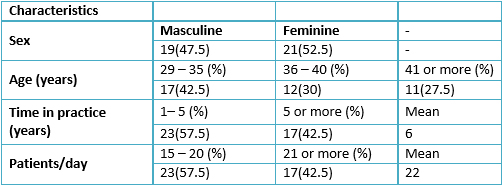
Table 1: Demographic and labor characteristics of participants
Most of the physicians (87.5%) reported that they had received training in Evidence-based Medicine (EBM) and Patient-centered clinical Method (PCCM).
Perceptions and attitudes towards quaternary prevention
Approximately 97% reported that they understand the concept of quaternary prevention (Figure 1), of which 65% reported that they have very good or excellent understanding of this concept.
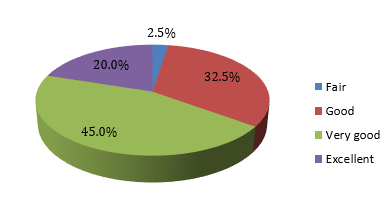
Figure 1: Level of understanding of quaternary prevention
Family physicians reported that the likelihood of overdiagnosis and overtreatment was approximately 40% (Figure 2).
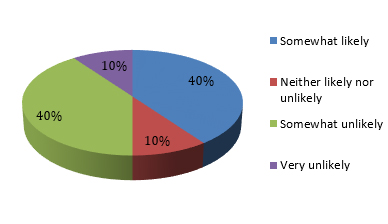
Figure 2: Reported possibility of overtreatment
Further, more than 97.5% of family physicians reported that the practice of quaternary prevention is very or extremely important (Figure 3). All of the physicians reported that it is important or extremely important to have specific recommendations of quaternary prevention in Peru (Figure 4).
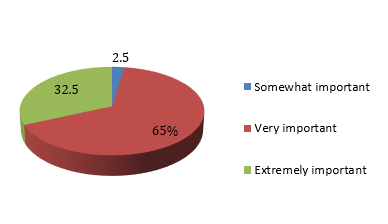
Figure 3: Importance of the practice of quaternary prevention
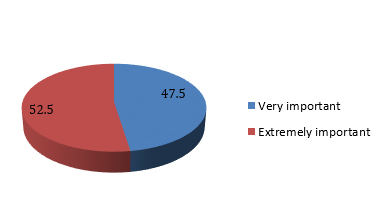
Figure 4: Importance of developing Choosing Wisely recommendation for Peru
Applicability and perception of relevance of Choosing Wisely Recommendations
Table 2 summarizes physicians' perceptions of the relevance of Choosing Wisely Canada recommendations. For each recommendation, more than 90% of participants considered the Choosing Wisely recommendation to be very or completely relevant. The recommendations involving not ordering ECG or X-Rays to asymptomatic patients and avoiding antibiotic use had the greatest proportion of respondents (85% or more) indicating complete agreement with relevancy. Recommendations that were less relevant to participants included those focused on avoiding annual physical exams on asymptomatic adults with no significant risk factors and non-insulin depending diabetic patients routinely testing.
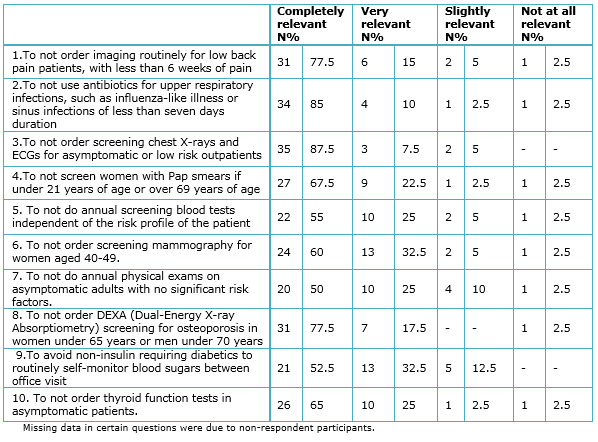
Table 2: Perception of relevance of choosing wisely recommendations
The proportion of family physicians that felt that the recommendations of Choosing Wisely Canada could be feasible for social security patients, was greater than 80% for 6 of the 10 recommendations and more than 67% in the other four (Table 3).The recommendations where family physicians reported less applicability were those related to not doing general blood tests or annual physical exam (22% or more).
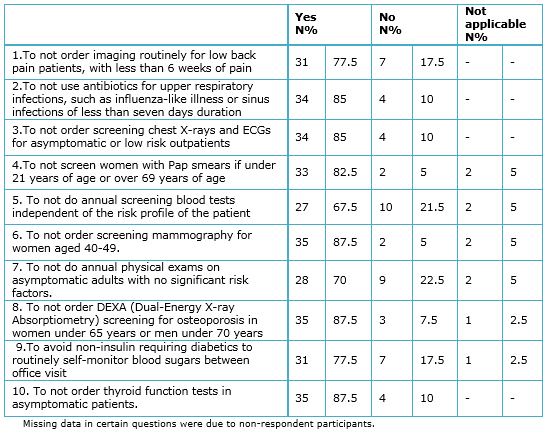
Table 3: Applicability of choosing wisely Canada recommendations to family physicians practice in Peru
Perceived barriers and recommendations
When family physicians were asked about the perceived barriers associated with the practice of quaternary prevention, the most frequent answers were: patient expectations (33%) and lack of continued medical education (CME) (29%). See Figure 5.
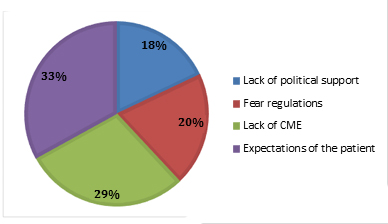
Figure 5: Perceived barriers for the practice of quaternary prevention
Development of local recommendations
There were numerous comments related to the development of local recommendations in Peru, including topics related to PSA screening, use of CT scan for headaches, and stool exams for parasites in children. Many of the respondents suggest dissemination of the quaternary prevention concepts and recommendations to all physicians and to the population in general (Table 4). The questionnaire results showed that most of family medicine practitioners have knowledge about the quaternary prevention concept. However participants knew the concept, they need more training into the development of local recommendations. Finally, physicians consider that their primary care centers do not have quaternary prevention recommendations, nor they widely known, therefore they suggested adding them.
| FREQUENT ANSWERS FOR THE DEVELOPMENT OF LOCAL RECOMMENDATIONS |
|
Table 4: Frequent answers for the development of local recommendations
Discussion
The results of this survey indicate that the majority of Peruvian family physicians in EsSalud consider quaternary prevention as a relevant issue. According to Marc Jamoulle, quaternary prevention has been proposed as a core concept of the Brazilian National Health System and this fact has led to an international movement towards quaternary prevention practices in the whole of South America, including Peru [9].
Family physicians reported having received training in the patient-centered clinical method and Evidence-Based Medicine. Knowledge of both is required for quaternary prevention practice [10]. family physician respondents in this study indicated that the possibility of overdiagnosis and overtreatment of patients was high. We need to also explore the preferences of patients when they are advised to undergo a screening test.
Wegwarth et al [11] found that 80% of patients expressed the desire to be told about screening harms before undergoing the testing; in the same study, 59% of patients would continue cancer screening (that they undergo regularly) even if they learned that the risk of overtreatment was high. Thus, even with the increased awareness of physicians, and the request of patients to be informed, the desire for testing could be high in patients.
In the Social Security System, there are institutional guidelines that state that patients must have at least one annual health control visit with some age-specific laboratory examinations [12]. This probably had a major influence on participant’s disagreement with the relevance of recommendations related to avoiding annual check ups or the laboratory examination visits. Therefore Institutional guidelines could be a barrier in the pursuing of quaternary prevention practice, even though there is consistent evidence regarding the lack of benefit of this practice in adult populations [13]. The Social Security system promotes annual check ups, including laboratory blood tests.
Perceptions of the relevance of the recommendations of Choosing Wisely Canada were also high among participants. This could be explained because in family medicine there are many encounters that have a high grade of uncertainty and family physicians must learn to deal with patients’ concerns and to control their own doubts, while making efforts to practice with the best available evidence [14]. The possibility of having local recomendations of practice to avoid harm to patients could improve family physicians work within the Social Security system in Peru.
Strengths and limitations of the study
One of the strengths of this study is that an extensive effort was made to find all relevant literature in three languages (Spanish, Portuguese and English) in PubMed and Lilacs database. An additional strength is that Dr. Marc Jamoulle (quaternary prevention concept creator) participated in reviewing the questionnaire, giving relevant feedback and pointing out important issues. In the literature review we did not find similar studies of quaternary prevention in Latin America. This is the first time that family physicians of Peru have participated as a group in a questionnaire to elucidate their attitudes, perceptions and awareness towards a topic that is important to their daily practice; there are not previous studies related to this issue in Latin America.
Our study has some limitations. While the goal of this review was to investigate EsSalud family physicians attitudes, perceptions, and awareness towards quaternary Prevention, in EsSalud in Lima, there are a total 560 primary care physicians and 64 of them are family physicians. family medicine as a discipline and medical speciality aims to focus on the care of the person as whole and the protection of patients; therefore, many of the theory constructs of quaternary prevention are inherent to family medicine practice [15].
In order to develop recommendations for primary care practice, we need to explore other primary care physicians (general practitioners without post graduate training, internal medicine specialist) attitudes, perceptions and awareness towards quaternary prevention [16].
Despite efforts to encourage the participation of the 64 family physicians, only 40 of them answered the questionnaire. Reasons that the response rate was not higher could be related to the short time we allowed for data collection (3 weeks) and the use of an internet-based questionnaire as the only mechanism to collect the data.
Implications of our results and future research
Many of the family physicians that participated in the study suggested that we need to spread the quaternary prevention approach to all physicians and disseminate the knowledge to the general population of Peru [17]. The results of this study demonstrate that there is awareness and appreciation of the concept among family physicians. Next steps could be to understand the situation among other primary care providers, recognising that currently, the majority of primary care physcians in Peru do not have post-graduate training in family medicine.
Future research could also use mixed methods to explore qualitatively, what family physicianss and other primary care providers undertstand about quaternary prevention concepts. It would also be important to explore patients’ perspective of the key issues related to quaternary prevention [18],[19].
Finally, another future goal could be the development of Choosing Wisely recommendations for primary care physicians in Peru [20]. This could start with the consensus of medical professional societies. This study can be seen as a step to identifying the applicability and relevance of the recommendations related to the practice of primary care physicians in Peru.
Conclusions
There is a positive preception towards both the quaternary prevention and Choosing Wisely recommendations amongst the family physicians employed by the Social Security Health System in Lima, Peru. The family physician should use his or her personal knowledge of the patient and their environment to offer preventive activities in the framework of the characteristics, beliefs and health situation of the local population being served.
Notes
From the editor
The authors originally submitted this article in Spanish and English. The Journal has not copyedited the English version.
Ethical aspects
The Journal is aware that the Ethics Committee of the Social Security in Lima, Peru, learned about this study and its possible publication in a journal of biomedical diffusion.
Conflicts of interest
The authors completed the ICMJE conflict of interest declaration form, translated into Spanish by Medwave, and declare not having received funding for the preparation of this report, not having any financial relationships with organizations that could have interests in the published article in the last three years, and not having other relations or activities that might influence the article´s content. Forms can be requested to the responsible author or the editorial direction of the Journal.
Funding
The authors declare there were no financing from external sources.

